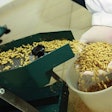
The coronavirus pandemic gripping our nation has created significant antagonism in every facet of our lives. Its impact on commodity markets is heightening awareness on dairy to scrutinize every facet of production. Dairy producers are seeking ways to minimize waste and improve cow comfort. The goal? Profitability.
When considering rations, each component needs to provide value for the cow and the bottom line. Which is why taking into account balance and bioavailability is vital when considering trace minerals.
Minerals can antagonize each other, which is the reason balancing them in the diet is so important. Trace minerals are needed for everything from reproduction and immune system function to metabolism and milk production – each mineral has a specific role in the animal’s body.
The least expensive option may appear to be a good choice; however, you can end up feeding more trace minerals, with a lower percent absorption, in order to maintain proper levels of trace minerals in the body tissues.
The key is to correctly balance the ratio of one mineral to another in the diet so they don’t interfere with the other’s absorption.
Antagonistic compounds in feed or water can reduce the absorption of trace minerals as well. A poor-quality water source with excessive iron or sulfates is an example. Ash in forages or high levels of sulfur in corn by-products are other potential antagonists, impacting mineral absorption.
How do you know for certain whether the trace minerals you’re feeding are being absorbed to support health and productivity?
Unfortunately, there isn’t a single test. We can measure animal performance, health and appearance, but those can be subjective and are affected by environment, management and other factors. We know trace minerals are essential and can be very effective; it’s more of a question of how best to incorporate them into the diet.
There is also a concern with feeding excess levels of these ingredients. If minerals are absorbed properly and at the right levels, there is less mineral excreted into the environment.
Although it’s an ongoing debate, finding the optimum level of trace minerals for highly productive ruminant animals can best be achieved using highly bioavailable, chelated, organic trace minerals.
In addition to balance and availability of trace minerals, dairy producers can and, especially during these times, should seek low to minimal cost methods for increasing cow comfort. Optimal cow comfort, welfare, housing, heat abatement strategies, nutritional additives and overall care are essential for the health and well-being of dairy cows. When these factors are well-managed, the return on investment of time is seen in achieving high productivity levels as well as increasing the productive lifespan of a cow. A healthy and highly productive cow is able to dilute its maintenance cost and significantly reduce its carbon footprint per unit of milk output.
In particular, management of transition cows has drawn the industry’s attention.
Producers have made great strides recently in reducing clinical health events. However, still 50% of our cows are having subclinical or clinical health events in early lactation showing we still have some progress to make in that area. Reducing subclinical and clinical health events is a cost savings for the dairy as well as increases cow longevity in the herd.
Management of transition cows includes attention to their housing. Dry cows are sometimes placed in older structures and often housed in stalls with smaller freestalls, and even in overcrowded situations. These situations can make it more difficult to get adequate resting and feeding time, which can result in health and production issues after they start their lactation. Fortunately, there are low-cost recommendations for removing the antagonisms sometimes found in this stage. Moving the neck rail forward or widening the stalls can improve cow comfort and the only cost can be labor and a few bolts. Placing a bedding saver (a 4x4 or PVC pipe) at the end of short stalls can increase length and allow for increased bedding in the stalls.
For both the close-up and fresh pens, Novus International, Inc. recommends one stall per cow, or if they are in a bedding pack situation, 120 square feet of lying surface. If it’s a co-mingled pen, we recommend 80% stocking density so that those submissive animals have access to the feed bunk and lying spaces. At the feed bunk we should strive for 30 inches/cow of space. Additionally, for fresh cows, we recommend minimizing lock-up times to less than one hour per day for herd health checks.
Some antagonism is outside our control. But there are antagonisms able to be managed on the dairy through feed additive selection and low-cost management changes.
Dr. Karen Luchterhand is the Ruminant Technical Service Manager for North America and manager of the C.O.W.S.® Program at Novus International, Inc. Learn more about the C.O.W.S.® program at novusint.com/en-us/pages/cows.


















